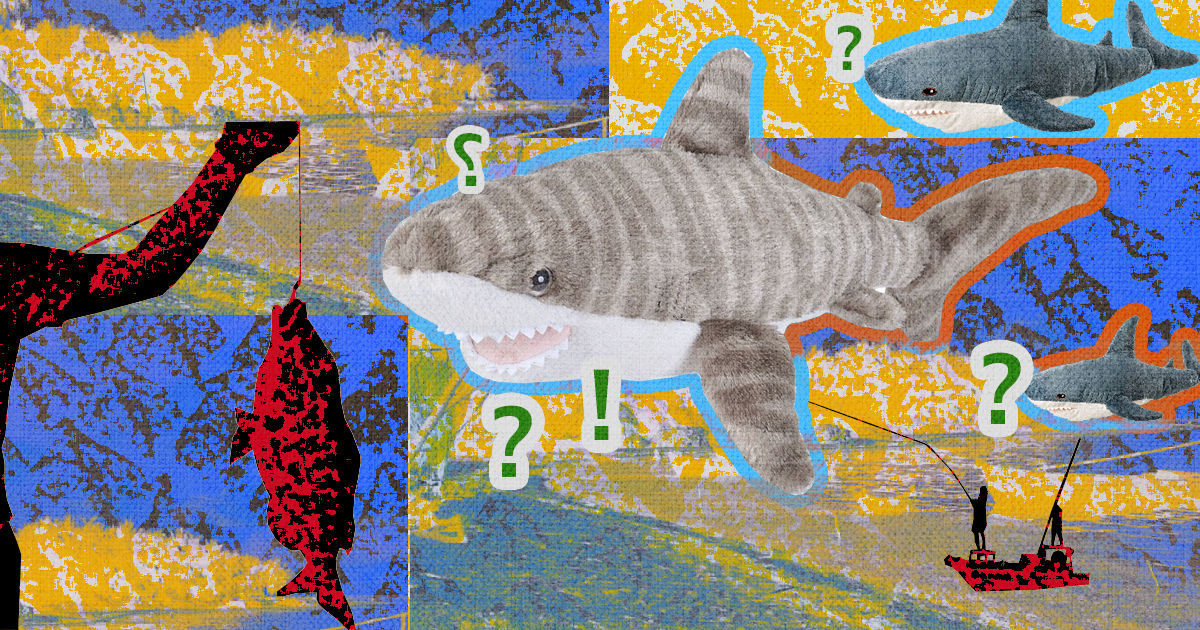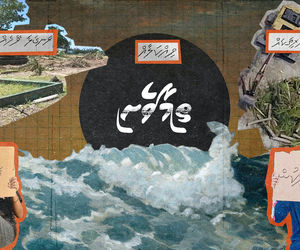‘Negative encounters’: what's really happening with sharks in Maldives
Following last week’s story about the country’s apparent shark problem, our explainer breaks the issues up into bite-sized pieces.

Artwork: Dosain
13 May 2025, 7:15 PM
Why are we talking about this?
There are increasing reports of negative encounters with sharks, particularly among reef fishermen. This has fueled a growing perception that shark populations have increased significantly, and beyond sustainable levels, since protection measures were introduced in 2010.
Last month, a 30-year-old man was injured in a shark attack near Kulhudhuffushi while in 2024 a soldier was killed by a shark during a training exercise near Laamu Maavah. Anecdotal reports suggest negative incidents involving sharks during tourist dives may be much higher than reported. Reef fishermen have also been complaining about depredation - sharks biting off their catch.
So, have shark populations actually increased?
No. Research conducted by Maldives Marine Research Institute in 2014 did not show a clear upward trend in shark populations, nor any significant decline since 2010. More recent research has also maintained that reef shark populations are stable.
This aligns with what we know about shark biology, given that they take a long time to reach sexual maturity and have a prolonged gestation period.
How important is the Maldives’ shark sanctuary?
The Maldives is one of only 17 shark sanctuaries in the world and is home to 31 shark species, 29 of which are globally protected. Shark diving contributes US$14.4m as direct revenue and an additional US$51.4m in value to associated local businesses.
Why were sharks protected?
Sharks were protected in 2010 after populations collapsed in the 1980s and 1990s due to fishing pressures. The protection measure came after lobbying from the tourism and diving sectors.
Why do fishermen say shark numbers have increased?
Fishermen, particularly reef fishermen, are reporting negative encounters with sharks, often reporting depredation. Some new fishing techniques, such as the use of submerged chum bags, spearfishing, and jigging contribute to increased depredation as sharks are drawn to bloody or weakened fish.
There is also a common belief among fishermen that shark protections, for the benefit of tourism, have come at their expense. This has led to resentment, particularly in more remote atolls where tourism is not that widespread. Kulhudhuffushi is among these, particularly as several families relied on shark fishing for their livelihood prior to protection measures.
Does tourism and shark diving have any effect on this?
Long-time industry experts believe shark tourism is contributing to behavioral changes in the species. Chumming and dumping fish is a common practice in the dive industry as businesses try to attract sharks to create a spectacle for guests. This leads sharks to associate humans with food, increasing the likelihood of negative encounters.
New research also shows that influencers seeking selfies and content showing up-close encounters with sharks are contributing to more shark attacks. This is also common in the Maldives.
Discussion
No comments yet. Be the first to share your thoughts!
No comments yet. Be the first to join the conversation!
Join the Conversation
Sign in to share your thoughts under an alias and take part in the discussion. Independent journalism thrives on open, respectful debate — your voice matters.




